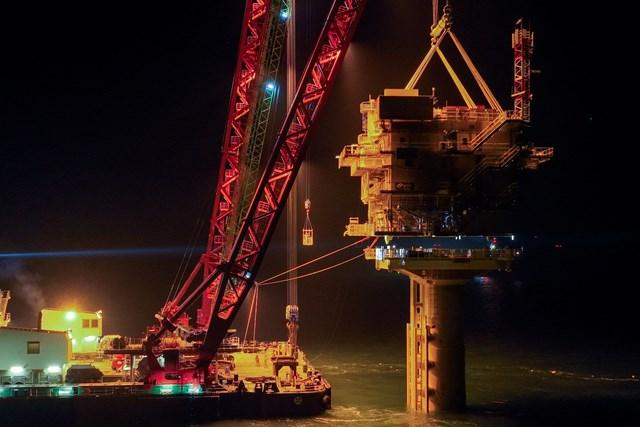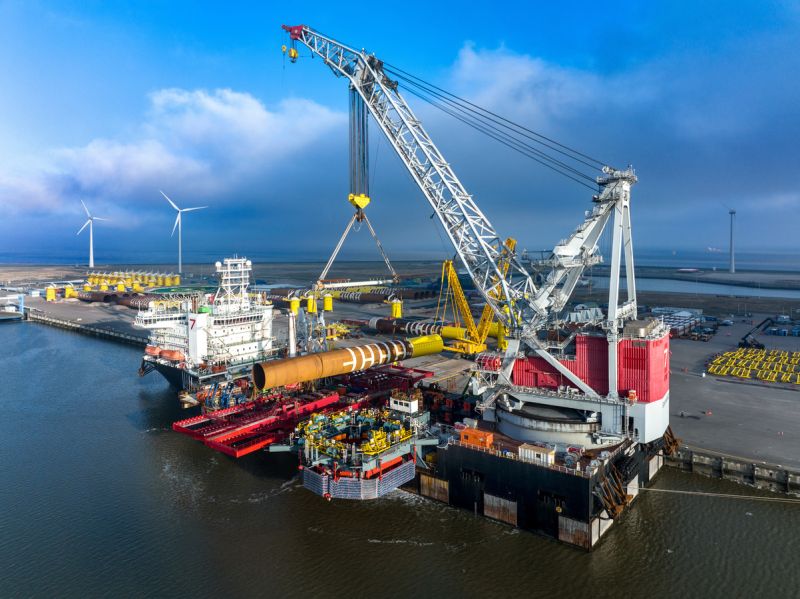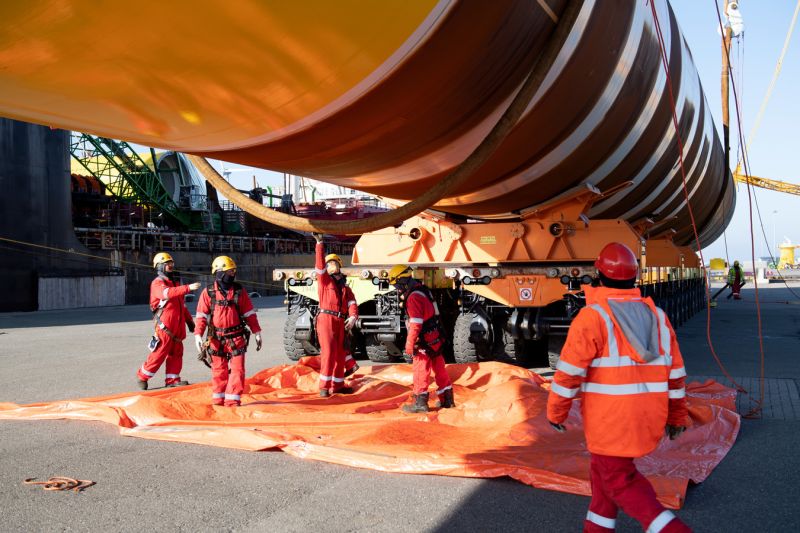Wind Energy – Kaskasi OWF
The 1,400-tonne offshore substation topside has been successfully installed on its monopile foundation at the 342 MW Kaskasi offshore wind farm in the German North Sea.

The journey of the substation topside started in Danish Aalborg at the manufacturing facility of Bladt Industries and took two days to ship across the North Sea. A Floating Heavy Lift Vessel placed the substation onto the monopile foundation, completing the installation of the heaviest component of the Kaskasi offshore wind farm.
Foundation installation works are also underway at Kaskasi, which is RWE’s sixth wind farm off the German coast and is being built 35km north of the island of Heligoland.
Seaway 7’s Strashnov, DEME’s Neptune and Sea Challenger and Fred Olsen Windcarrier’s Blue Tern are engaged in the installation of 38 monopiles and transition pieces.
The foundations, each up to 64 metres long, weigh up to 740 tonnes.
The operations and processes at the offshore construction site are coordinated by the RWE control room on Heligoland.
To install the foundations into the seabed at depths of 18 to 25 metres, RWE is utilising two installation methods – conventional hammering and innovative vibro pile driving technology, which has the potential to reduce underwater noise emissions.
Sven Utermöhlen, Chief Executive Officer (CEO) Offshore Wind, said: “If Germany wants to supply itself almost entirely with electricity from renewable energies by 2035, this will require a huge effort. Faster offshore expansion is particularly important to simultaneously achieve the climate targets and more energy sovereignty. We want to help make this happen and the fact that construction of our Kaskasi offshore wind farm is now picking up pace is a clear sign of this.”





